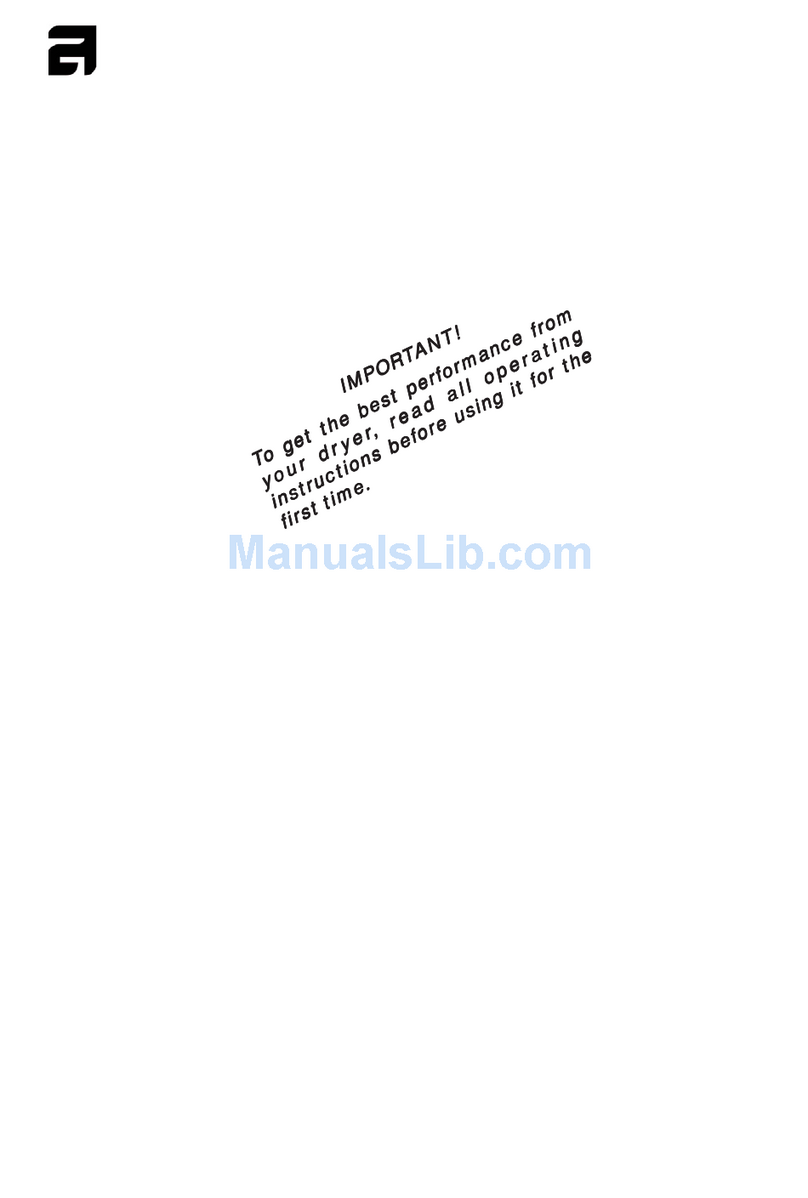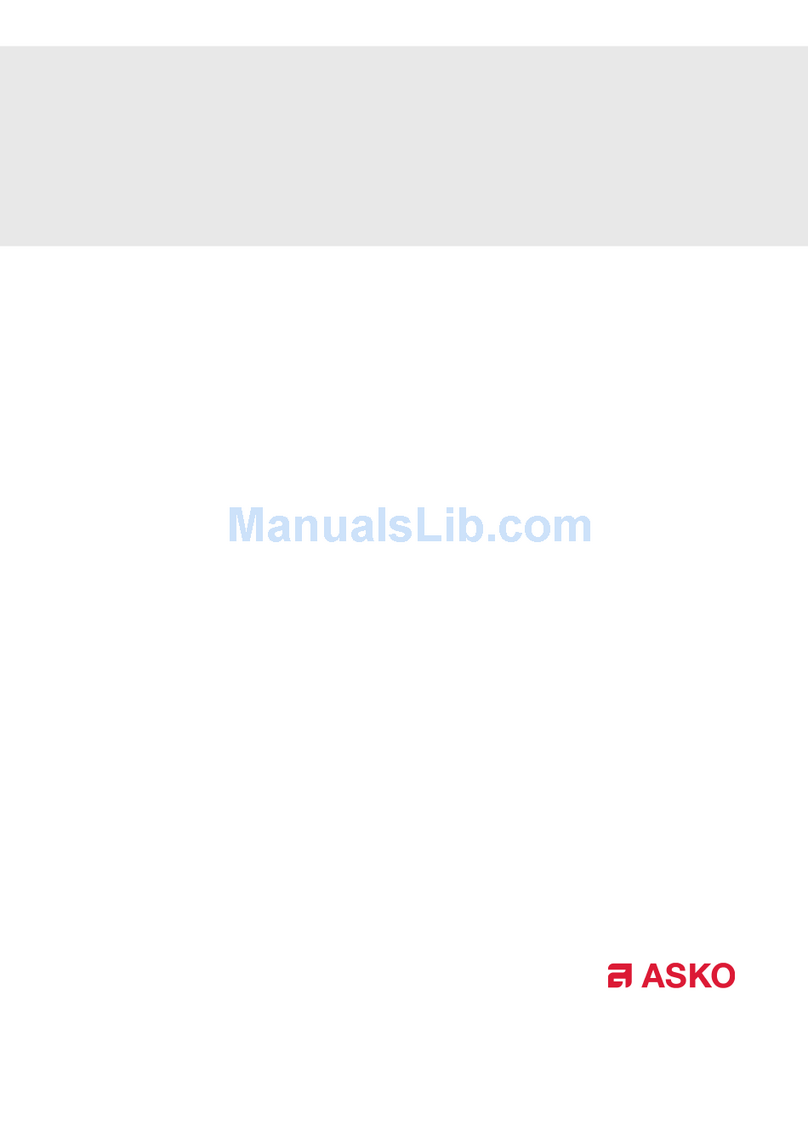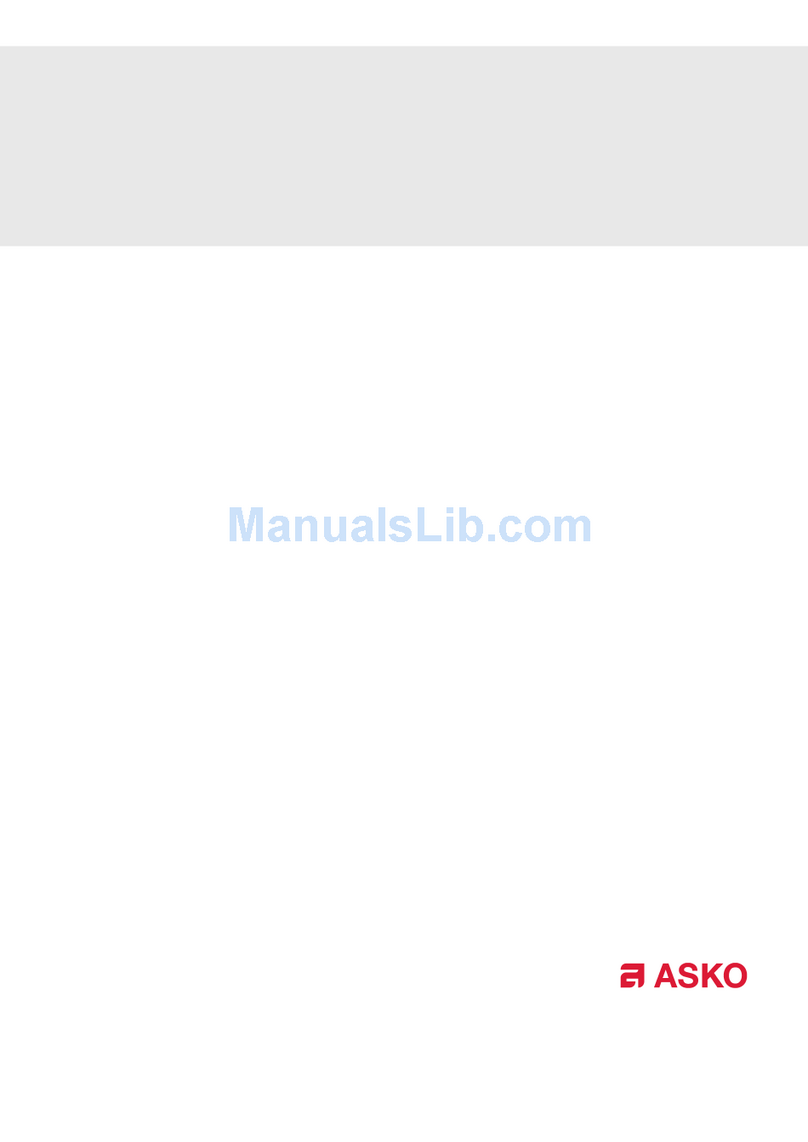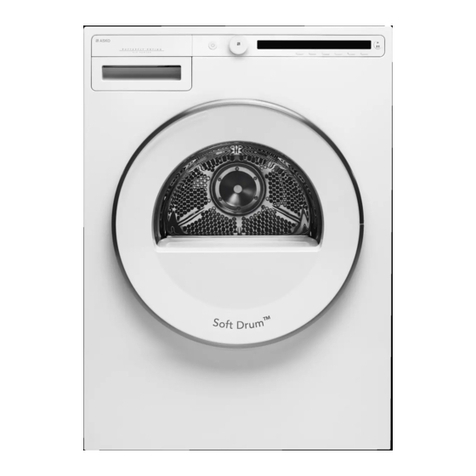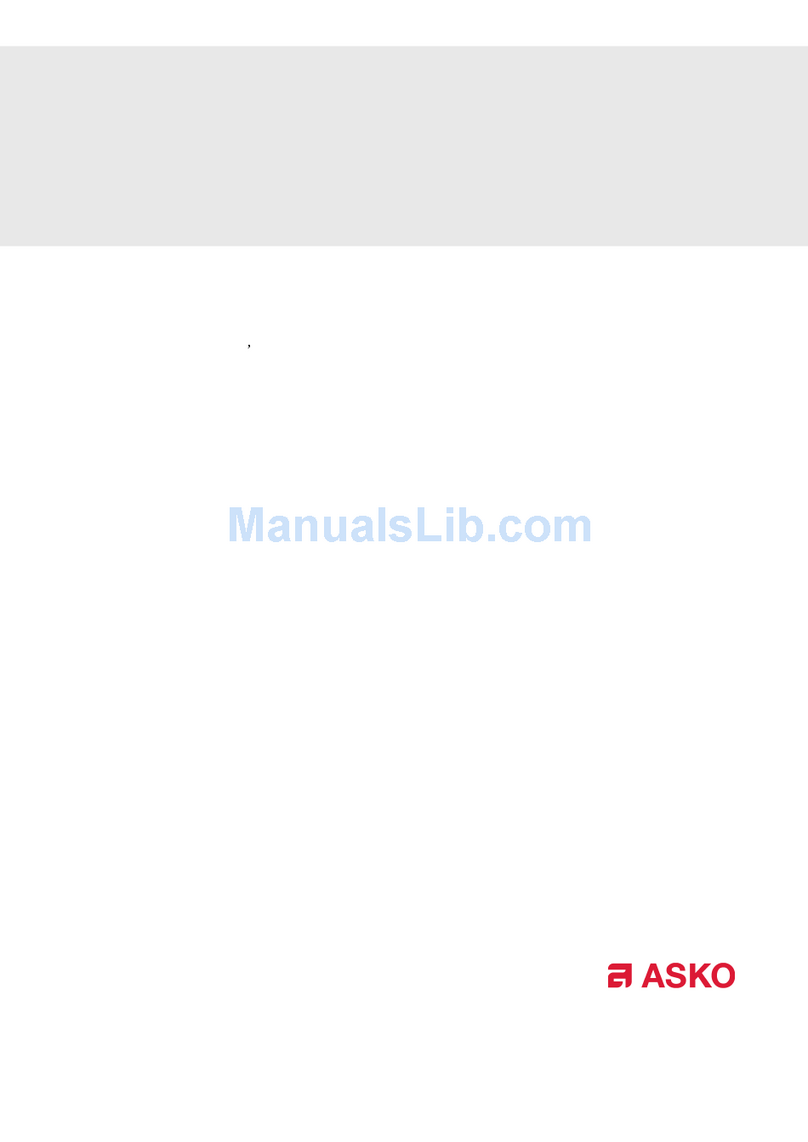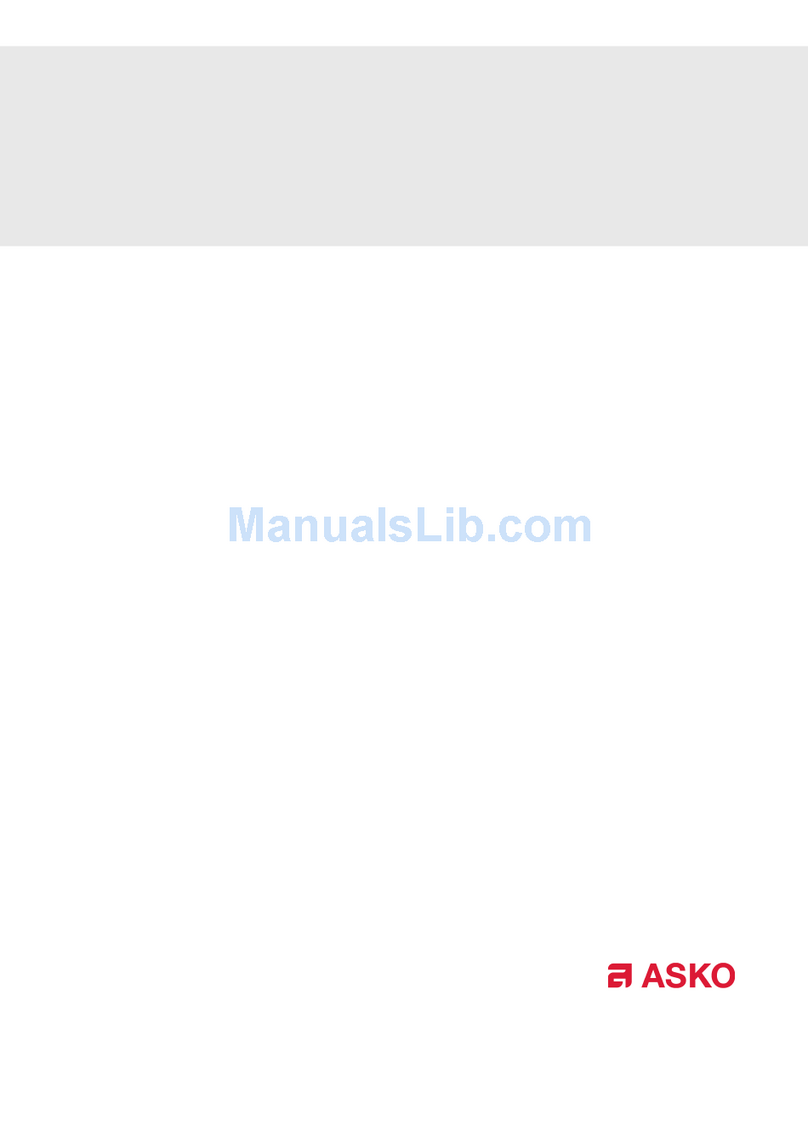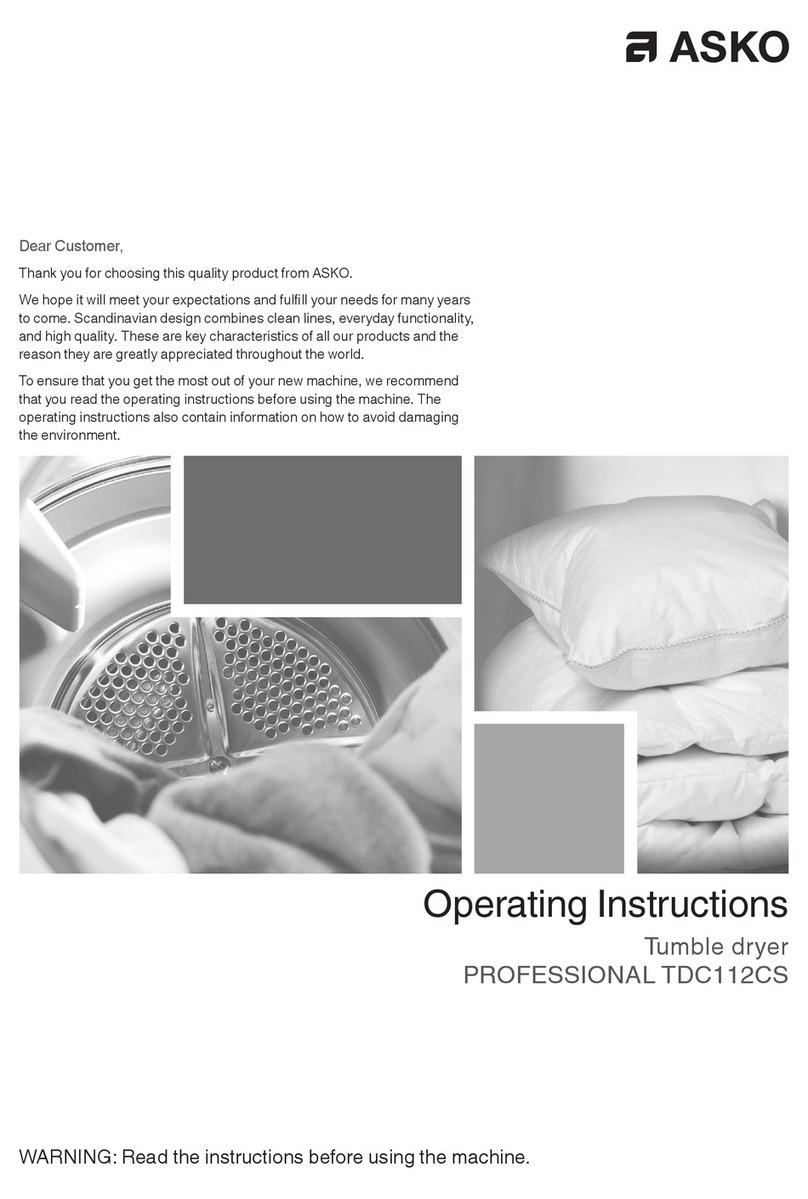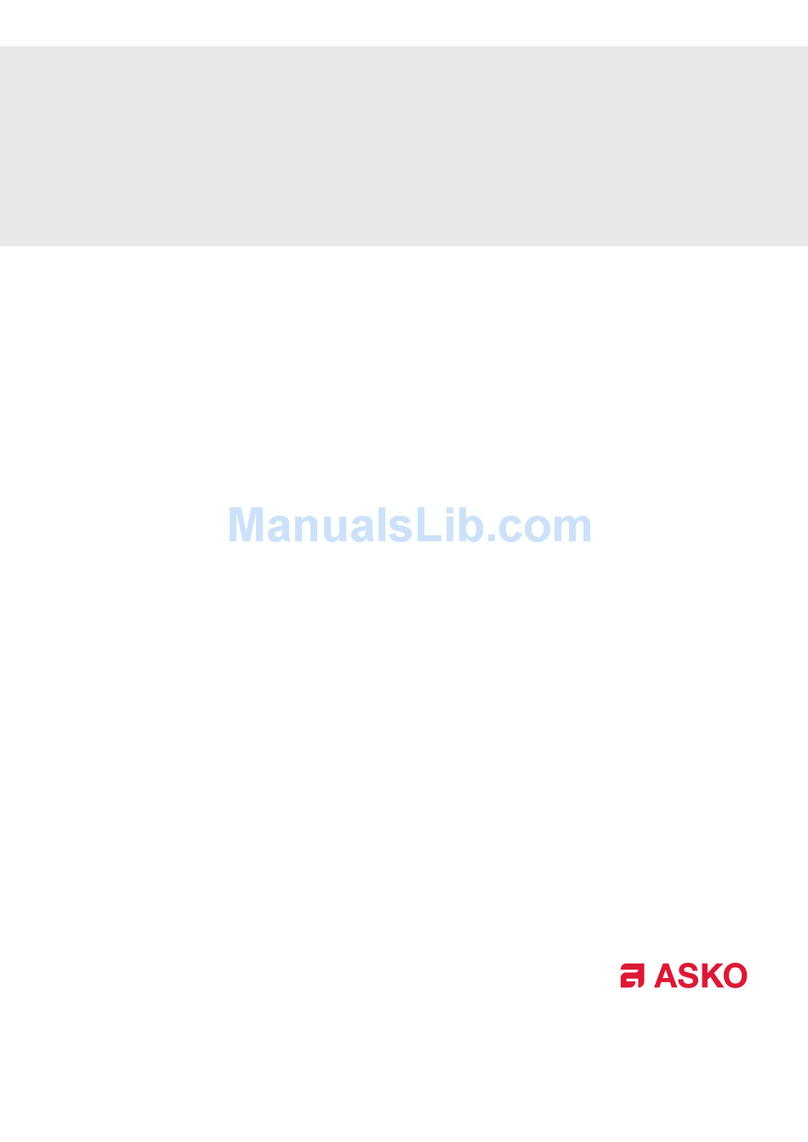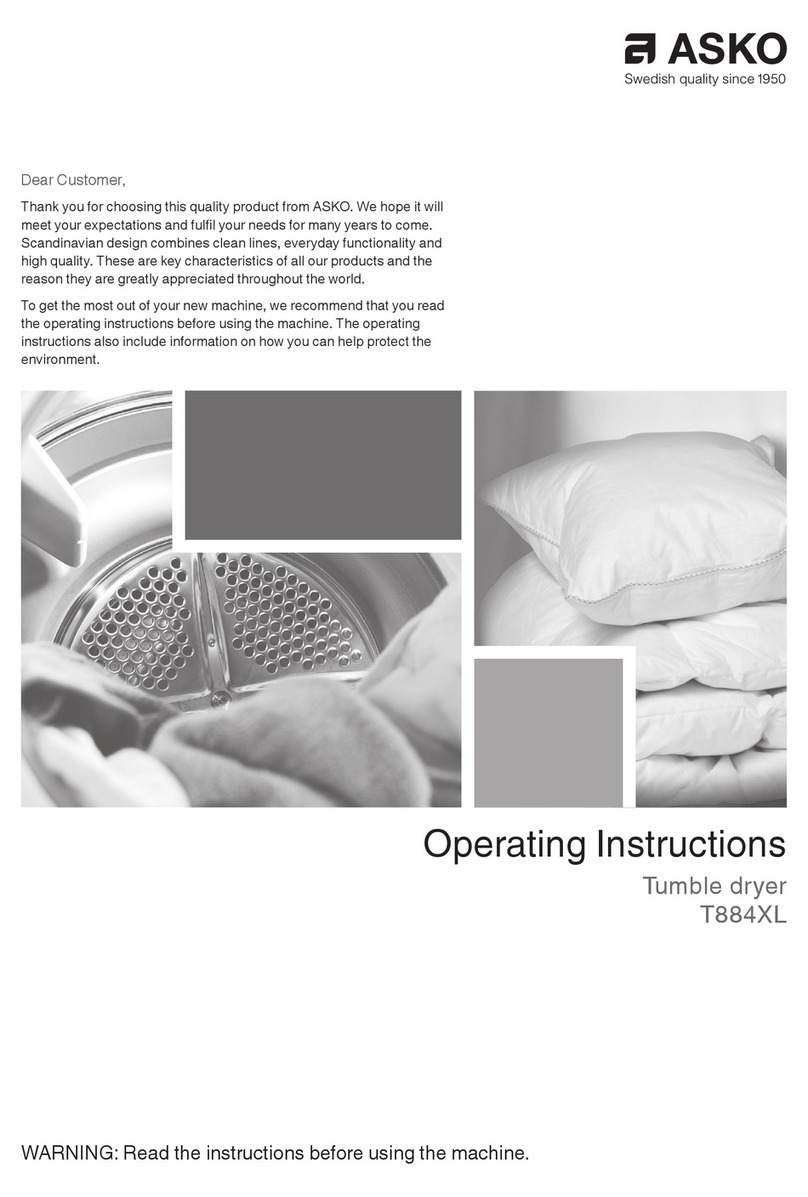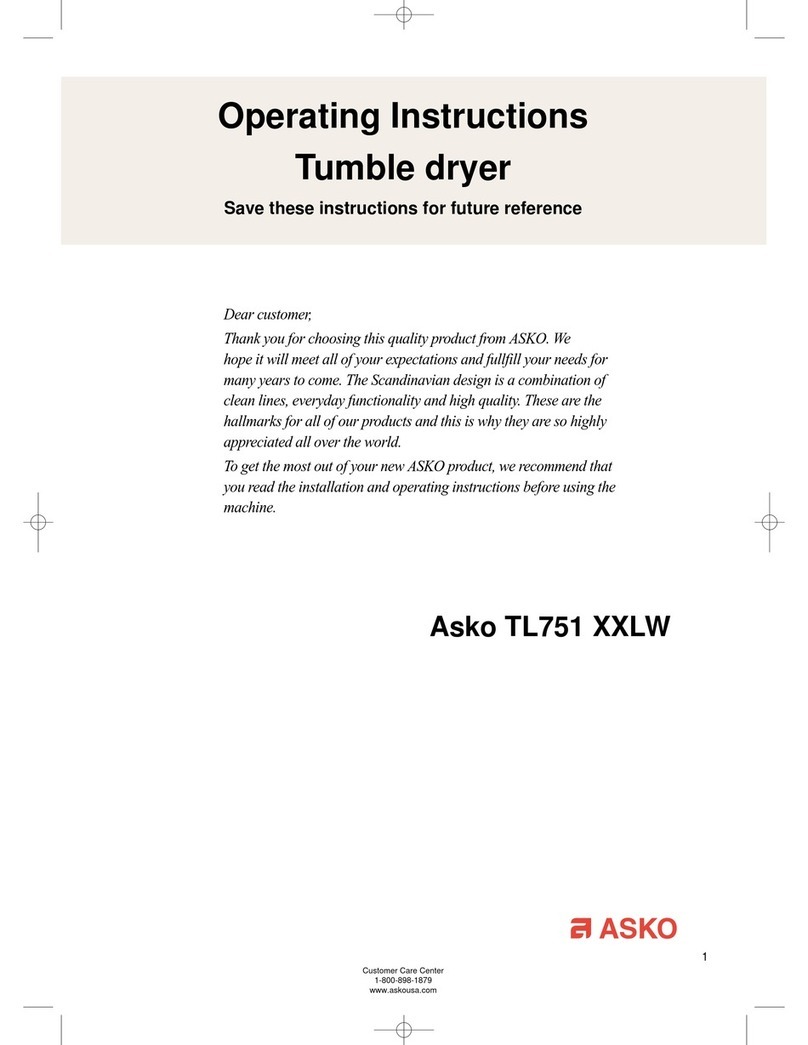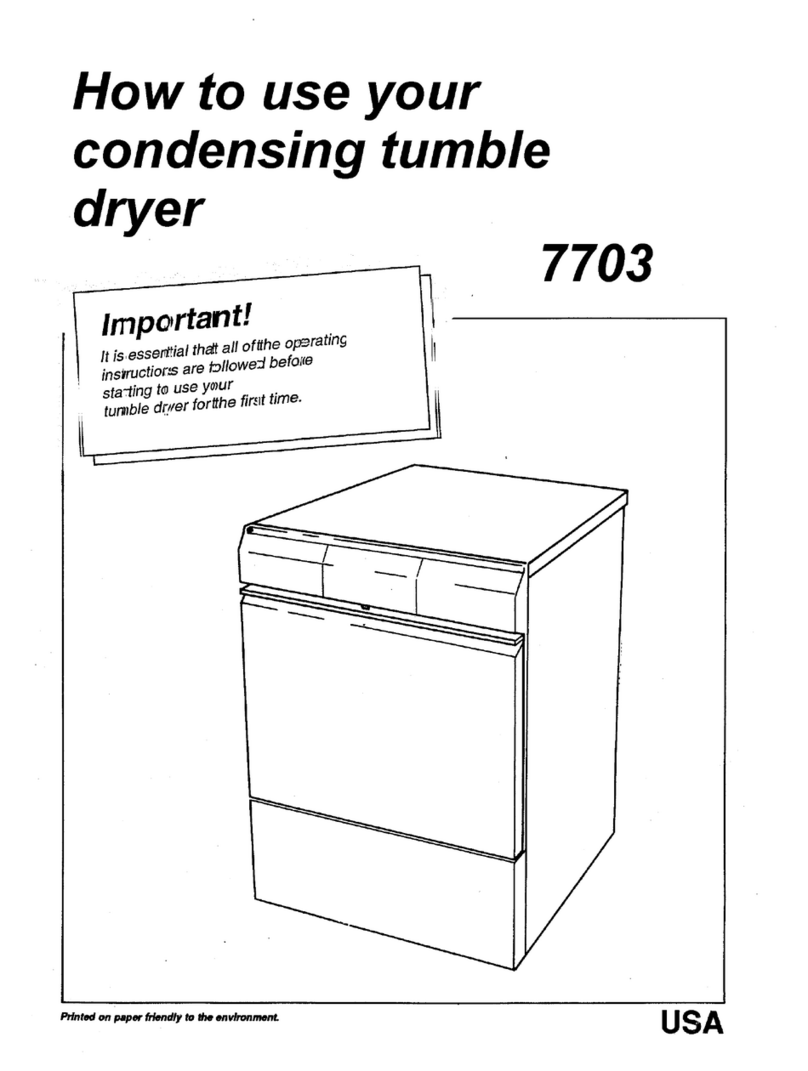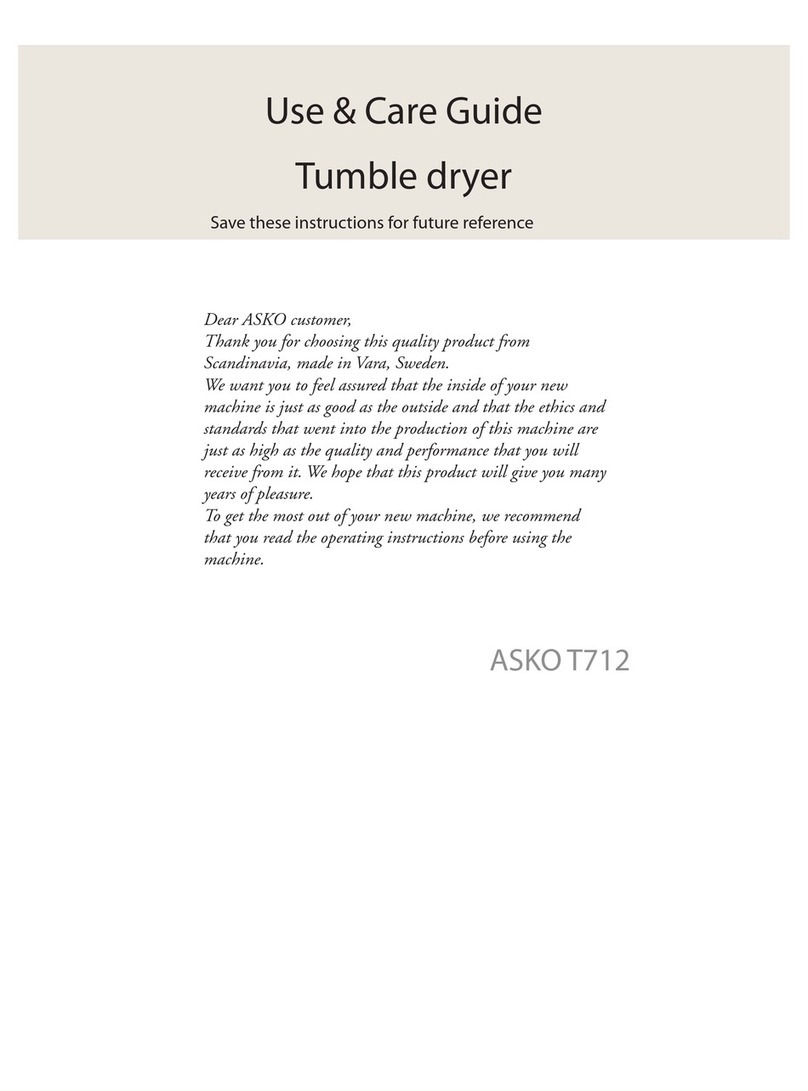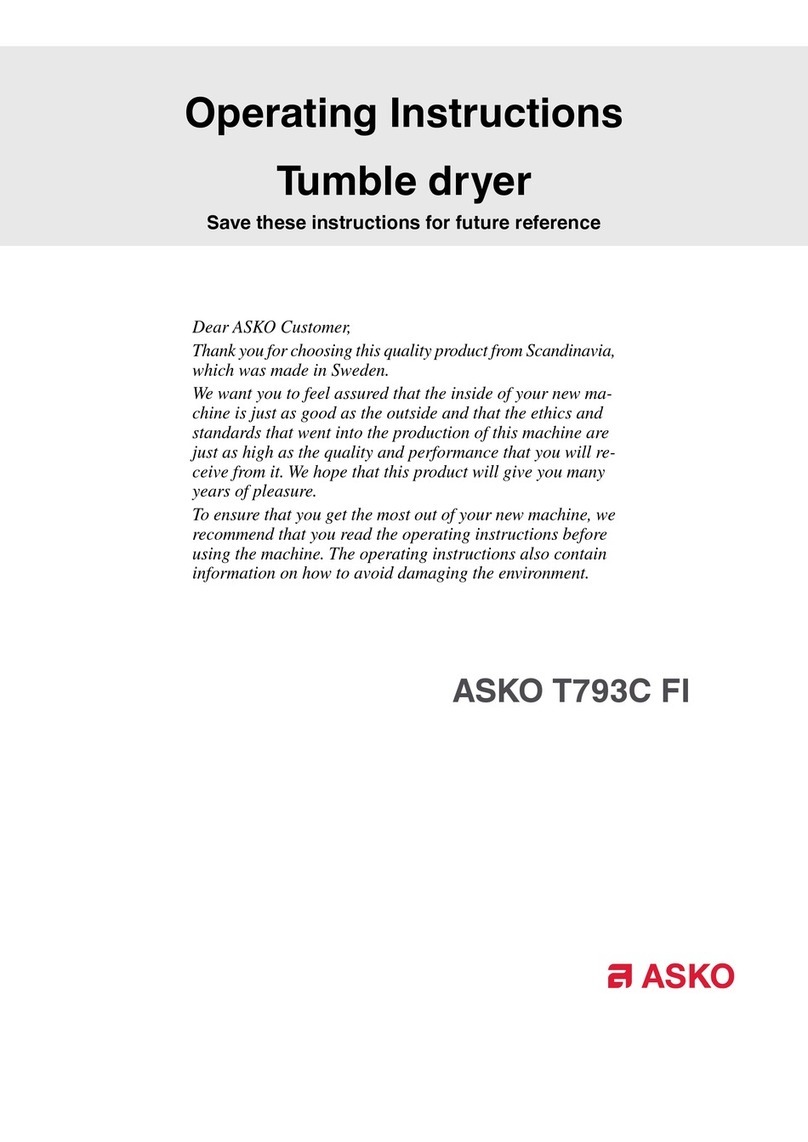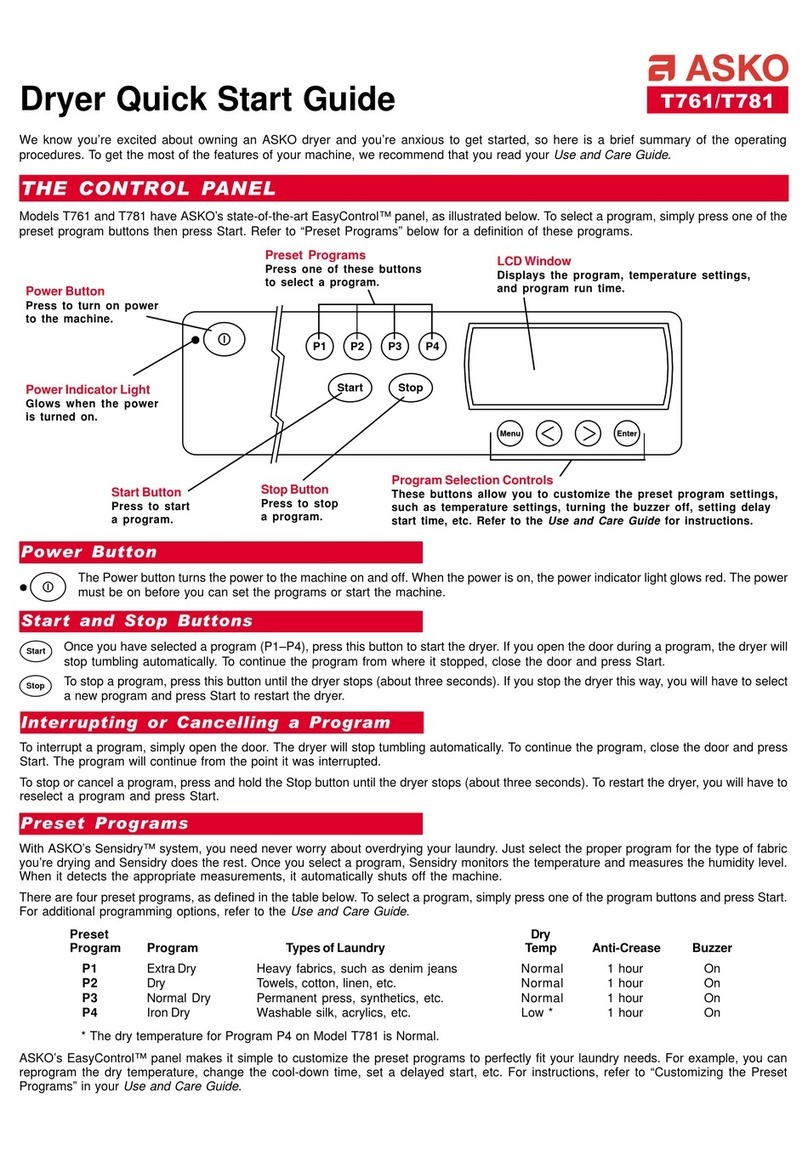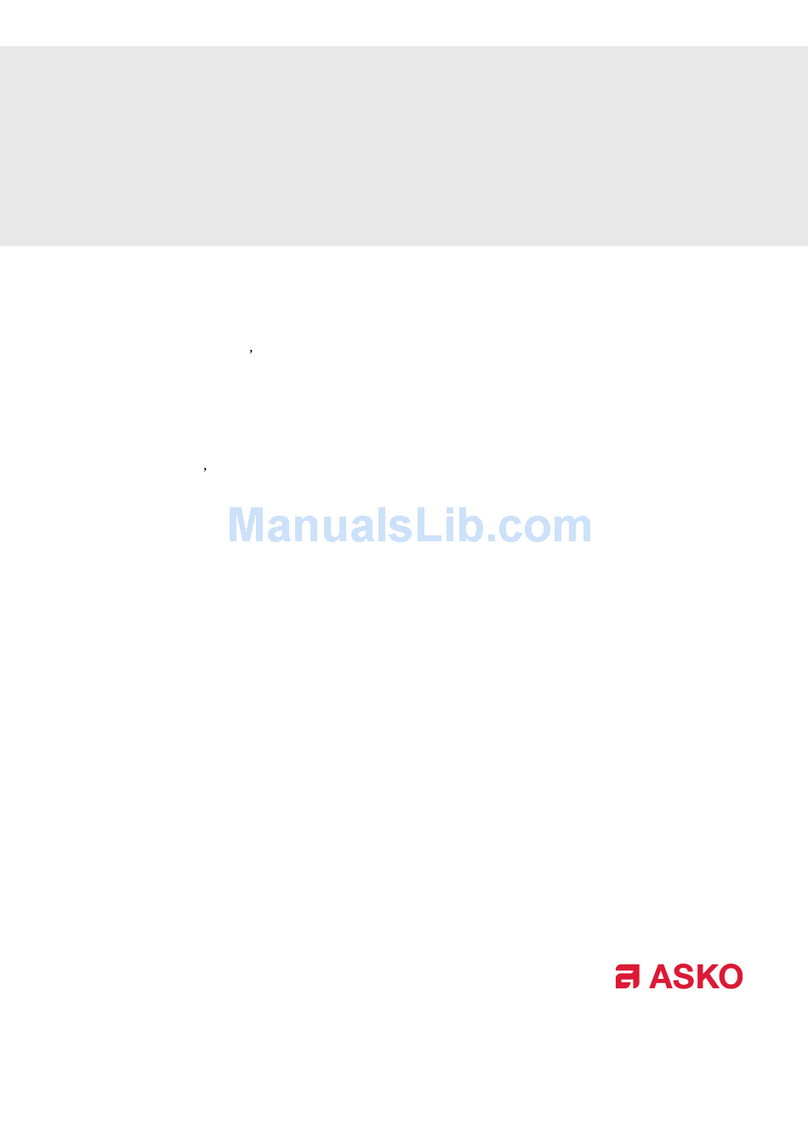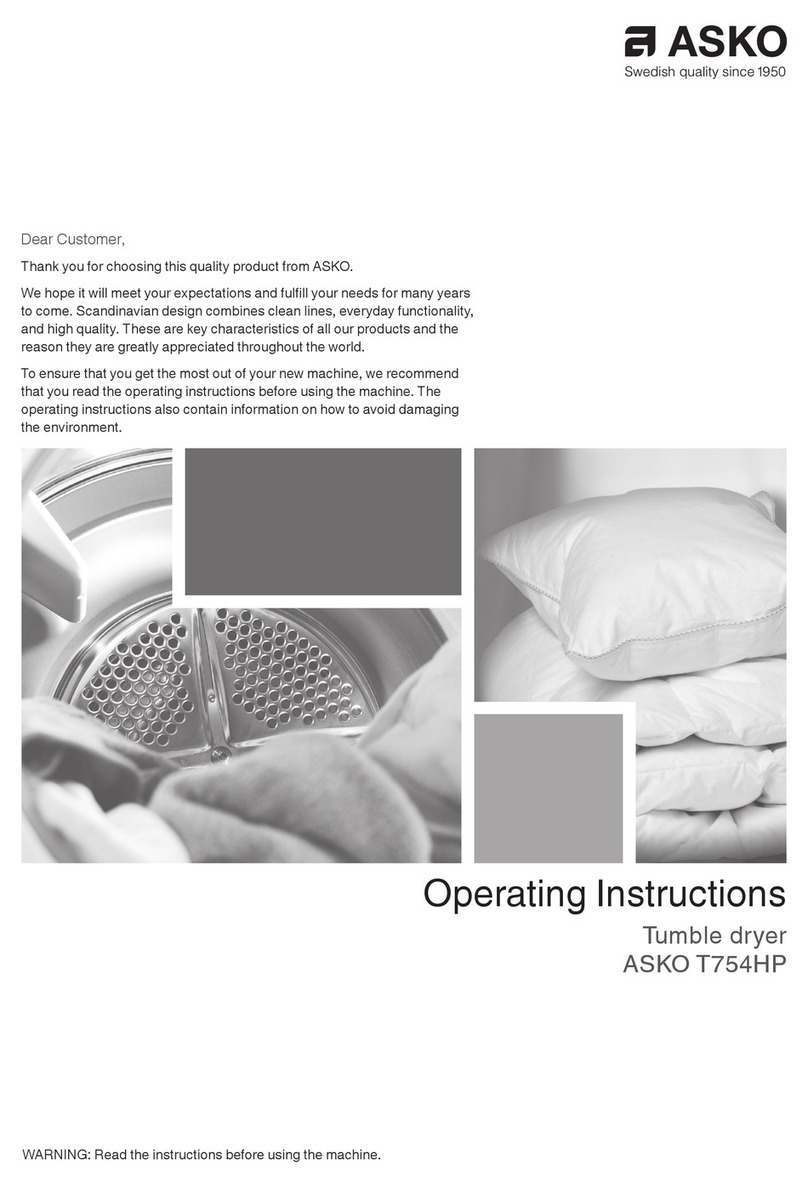
6
SAFE OPERATION
This advice and the warnings on safe operation have been compiled so that you
can avoid incorrect use and unnecessary risks of accidents, and should be read
before the drying cabinet is installed and used.
This drying cabinet fulls the relevant
safety requirements. However,
incorrect use can lead to personal
injury or material damage.
WARNING!
WARNING - This appliance is
intended only for drying textiles
washed in water.
Use
■This appliance can be used by children aged from 8 years and
above and persons with reduced physical, sensory or mental
capabilities or lack of experience and knowledge if they have been
given supervision or instruction concerning use of the appliance in
a safe way and understand the hazards involved.
■Children shall not play with the appliance. Keep an eye on children
when they are in close surroundings of the appliance
■Cleaning and user maintenance shall not be made by children
without supervision.
Technical safety
■Check that the drying cabinet has not suered any visible damage
before installing it. A damaged drying cabinet must not be used as
it may constitute a danger.
■The drying cabinet may only be connected to an earthed
socket that has been installed in accordance with current safety
regulations. After installation, the wall socket must be accessible
so that the power to the drying cabinet can be turned o at any
time.






